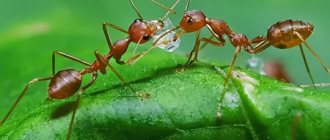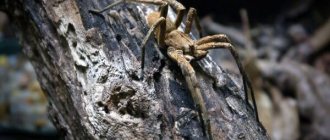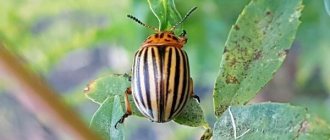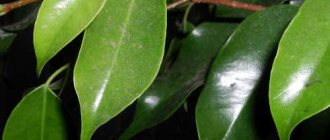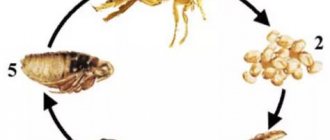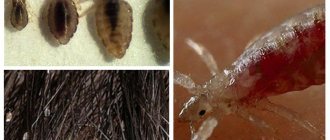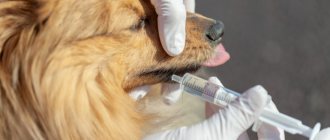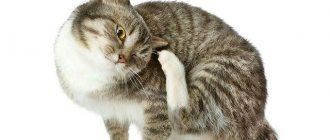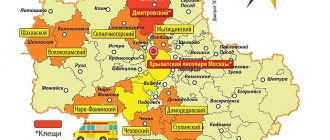Hierarchical ladder
- Fact:
Each resident of the anthill has his own specific responsibilities, but all efforts are aimed at only one thing - the protection, strengthening and prosperity of his large family. - Fact 2:
Some ant species have insect soldiers that are unable to feed on their own. The workers are forced to feed them. - Fact 3:
Worker ants are divided into several subgroups within their group. Who performs what duties depends on the individual qualities of each insect. - Fact 4:
A little ant is able to lift and carry weight 50 times its own! And if several insects join forces, the number increases to 70-80!
Ants are gregarious insects. There are no solitary or hermit ants. All varieties of these small workers live in colonies. Each resident of the anthill has his own specific responsibilities, but all efforts are aimed at only one thing - protecting, strengthening and prosperity of his large family .
Ant "table of ranks"
Communication and mutual contact between fellow tribesmen is carried out using channels (signal and food). The colony is conventionally divided into “detachments”:
- Workers.
- Soldiers.
- Females.
- Males.
At the head of this legion is the queen, also known as the queen . The uterus has the largest size. This is a real egg production conveyor. The working group of ants is required to care for eggs and pupae, search for and prepare food, repair and strengthen the anthill. A detachment of guard ants, the so-called soldiers, perform protective functions, guard entrances and deal with strangers. Females and males are destined for the role of participants in the process of reproduction.
Content
- 1 Morphology 1.1 Workers
- 1.2 Soldiers
- 1.3 Males
- 1.4 Queen
- 2.1 Army ant syndrome 2.1.1 Nomadic and stationary phase
- 2.3.1 Sexual selection by workers
Soldier Ants
Anthill defenders are a subspecies of the worker ant, but with slightly larger dimensions. Some ant species have insect soldiers that are unable to feed on their own. The workers are forced to feed them.
The main function of a soldier is protective. It protects the anthill, food supplies and foraging ants. A secondary task is to help dismember large prey into pieces if the worker ant is not able to carry it away entirely.
Hybrids
Sometimes hybrid forms of insects are born.
Something between a worker and a soldier. Such ants are approximately one and a half times larger than ordinary workers, but are smaller in size than the queen. Remember:
no matter who is born in the ant farm, there is no need to interfere with the natural course of events. The ants themselves will figure out the identity of the new member of the anthill.
Also, do not expect soldiers to quickly appear in the formicarium. In order for soldiers to appear, it is necessary to create comfortable living conditions for the queen and the entire anthill. In addition, it is important to avoid stress factors: bright light, loud sounds and vibrations near the formicarium.
And only when the queen feels comfortable enough will she lay a large egg, from which the first soldier will subsequently emerge.
Worker ants
This is the largest group of inhabitants of the anthill. The first ones to appear after the queen lays the first chamber of the future anthill are the builder ants. He expands and strengthens the future underground kingdom, takes care of future offspring.
Working ants are divided into several subgroups within their group. Who performs what duties depends on the individual qualities of each insect. For example, individuals with proactive inclinations and reactions become hunters or scouts. The more sedate ones graze and spread aphids to plants and collect their sweet honeydew. The change in activity can only be influenced by age, when the old ant is no longer suitable for reconnaissance or hunting, or the sudden death of most of the colony.
Young specimens work underground, inside the anthill. They build new cells, dig passages, and care for larvae and females.
Hydration
Humidification is standard, like all ants. We take an acrylic formicarium and fill one of the chambers next to the humidification hole. Plaster or alabaster is used as a humidifier. Very similar things.
It's a good idea to add a water trough to the arena. You can do it with a nanosponge or cotton wool. The mandibles can get tangled in the cotton wool. If you place a water source with open access, you can be sure that the ants will go for a swim. Moisture stimulates them to reproduce.
Most ants settle in late spring or summer. Since the reapers live in the steppes. In summer, flying conditions are not the most favorable. Due to low humidity and high temperatures.
The Reapers have found an ingenious solution; they raise the young generation in late summer and autumn. The winged generation overwinters in the anthill, and flies in early spring.
Ants' Strength and Endurance
They say about some people: “Works like an ant.” And it does not mean that the result of his work is microscopic. On the contrary, it is praise denoting a gigantic job done alone. The comparison with insects is not accidental. Few in the animal world can boast of such strength and endurance. The little ant is able to lift and carry weight 50 times its own! And if several insects join forces, the number increases to 70-80! This is because the ant's body structure is dominated by muscle tissue. Considering the size of the anthill and the number of “freeloaders” that the worker ant provides with food, it is clear that it is not at all superfluous in strength. A stubborn insect, if unable to lift and carry large prey, will drag it along the ground behind it until help arrives.
Surprisingly, when an obstacle appears on the way, the ants cling together with their paws and form living bridges up to several meters long. This is usually necessary to overcome a stream, a crevice, or any place where it is not possible to walk on the ground. So, such a bridge can withstand a load of several kg.
general information
From Latin messor - reaper, structor - builder. Reaper builder. They got their name because they live in the steppes and feed on the grains of steppe plants. They build anthills, which are a deep vertical passage. They often dig down to groundwater, which is why they even inhabit deserts.
Belongs to the tribe Pheidolini as part of the Myrmicinae subfamily. They are the largest representatives in their family. The genus Messor includes 110 species of ants adapted to life in the desert zone on almost all continents. Thus, 30 species live in Europe alone, 5 of them in Russia:
- Messor aciculatus;
- Messor denticulatus;
- Messor kasakorum;
- Messor rufitarsis;
- Messor constructor.
The size of the colony reaches up to 5,000 individuals.
One anthill can destroy up to 2000 pests. This is a huge benefit for plants.
Who's in charge?
The formation of a new colony begins with the uterus. This is the queen of the colony. It does not perform any functions (harvesting, protection, construction), except one - to increase and maintain the number of the ant family. The uterus is formed from an ordinary female who was fertilized by a male, and she was able to organize her own “kingdom”. The queen is the only one with wings, which she will bite off herself after nursing her first litter.
The lifespan of a queen ant reaches two decades or more. As long as the queen is alive, the colony has every chance of rising from the ashes after any, even the most crushing, losses. Over the entire biological cycle, she lays half a million eggs.
Following the Queen Mother in status are the workers, the most numerous livestock of the colony. Then come the security troops. And males and females close the chain, among which, of course, there are individuals who, upon successful fertilization, will themselves become queens and form their own ant kingdom.
Taxonomy
Historically, "army ant" broadly referred to various members of five different subfamilies of ants. In two of these cases, Ponerinae and Myrmicinae, only a few species and genera exhibit legionary behavior; in three other lineages, Ecitoninae, Dorylinae, and Leptanillinae, all constitute Legionnaires species. More recently, ant classifications now recognize an additional New World subfamily, Leptanilloidinae, which also consists of obligate legionnaire species, as does another group now included among the army ants.[27]
A 2003 study of thirty species (Sean Brady of Cornell University) indicates that army ants of the subfamilies Ecitoninae (South America), Dorylinae (Africa), and Aenictinae (Asia) together formed a monophyletic group based on evidence from three molecular genes and one mitochondrial gene. Brady concluded that these groups thus represent a single lineage that arose in the mid-Cretaceous of Gondwana. Thus, these subfamilies are now generally grouped under the single subfamily Ecitoninae, although this is still not generally accepted.[29]
Accordingly, the army ants currently recognized consist of the following genera:
Subfamily Dorylinae (Aenictinae, Aenictogitoninae, Cerapachyinae, Ecitoninae and Leptanilloidinae, 2014)[30]
- Enictus
- Asphinctanilloids
- Heliomyrmex
- Dorilus
- Eciton
- Labidus
- Leptanilloids
- Neyvamirmex
- Nomamirmex
Subfamily Leptanillinae
- Anomalomyrma
- Leptanilla
- Faulomirma
- Protanilla
- Yavnella
Subfamily Myrmicinae
- Phidologeton
Subfamily Ponerinae
- Leptogenis
(some species) - Simopelta
Subfamily Amblyoponinae
- Onychomyrmex
"Proletariat"
The vast majority of the population of any anthill is the third caste - workers. Although ants are usually called in the masculine gender, they are all physiologically underdeveloped sterile females. They do not have wings, and their ovipositors are turned into stings - personal military weapons designed for defense and attack.
Workers provide the livelihood for the family. They build and protect the nest, provide the anthill with food, clean and feed the “queens” and “children,” protect the feeding area, ensure the flight of winged individuals, etc. The number of workers in the family varies - from several tens to hundreds of thousands and even 10– 15 million. The life expectancy of six-legged proletarians is from 4 to 7 years.
Photo: Roman Prokhorov
What are the agricultural activities of insects
You might think that leaf cutters collect leaves for food. This opinion is wrong. Ants are unable to digest tough plant fibers. The collected leaves are chewed by a certain caste of insects. The resulting plant mass is stored in specially designated areas in the anthill, where favorable conditions are maintained.
A fungus begins to grow on the plant matter, which is food for insects. The ant does not eat the fruiting bodies of mushrooms. Only mycelium is required.
The ant bites off the fruiting bodies at the initial stage of their development. For insects, this is a waste of resources and does not provide any nutritional value. The leaf cutter's saliva contains a number of antibacterial substances that help destroy harmful microorganisms that pose a danger to the mycelium.
There are a huge number of types of leaf cutters
In total, there are about 200 species of ants in the world that grow mushrooms. Some are done on dead animals or feces. Leaf cutters use the most accessible and simple material. Leaf cutters are considered pests. In places where they live they can destroy all the foliage on trees and shrubs.
Your own vegetable garden
Their process of destroying foliage is very interesting. Some individuals trim the leaf from the cutting, then other ants approach it, specializing in gnawing out small pieces and dragging them into the house. Separate rooms of the anthill are reserved for growing mushrooms. And the leaves serve as a nutrient medium. To make mushrooms grow better, these insects use special fertilizers - their excrement, which they place on each leaf. But ants don't just eat mushrooms. They make sure they don't grow too big and trim them regularly. Then drops form at the site of the cut, which serve as food for them. The ants lick these drops, and their saliva, which contains large amounts of antibiotics, destroys harmful fungi and bacteria that can damage their mycelium. To ensure that the entire colony has enough food, these insects can grow about 100 mushrooms. Moreover, one weighs about 500 grams.
Nutrition
The basis of nutrition for these ants is a symbiotic relationship with fungi. The grown mushroom itself does not serve as ant food. It gnaws at the very base, and the released drops
leaf cutters lick thoroughly. The saliva of leaf-cutter ants contains antibiotics that can destroy fungi and bacteria that destroy the main mycelium. And the presence of special actinobacteria suppresses the development of parasitic fungus directly on the mycelium. The mycelium itself resembles a sponge containing a lot of nutrients.
After some time, hardened nodules form in these places, which cover the entire surface of the nutrient substrate with thick and transparent bodies. Such growths are called ant kohlrabi , which is the main food of the ant family. The weight of one such mushroom can reach 500 grams. One ant colony can have more than a hundred of these fungi.
Notes
- “There are also interesting [evolutionary] convergences within ants. Although most ant colonies live a sedentary life in a fixed nest, it appears that one can successfully make a living by wandering around in vast marauding armies. This is called the legionnaires' habit. "(Dawkins 1986)
- “Because army ants are found almost everywhere, scientists hypothesized that they evolved many times after the breakup and dispersal of the supercontinent Gondwana just over 100 million years ago. The traditional view of the evolution of army ants needs to be revised due to new data obtained by Sean Brady, an entomologist at Cornell University, USA, who discovered that these ants descended from a common ancestor ". White House 2003)[28]
Hierarchy of ants in an anthill
An ant colony is a single family consisting of tens of thousands of individuals united by a common goal - the life support of the anthill . Each individual has its own clearly defined task, which it performs day after day. All ants are divided into groups according to type of activity. This is the so-called professional division. Each group specializes in performing one task. For example, nannies are involved in caring for newborns, foragers are involved in obtaining food, builders are involved in improving the living conditions of the family, etc.
Quite recently, scientists have found that professions can be chosen in accordance with the abilities and physical characteristics of ants, identified in childhood. So, all ants begin their careers as nannies. Then the larger ones become warriors or guards, some become shepherds, and some prefer to care for the young for the rest of their lives. As an individual ages, when it becomes weaker (and the life expectancy of hard workers is 2-3 years), it has the right to switch to another profession, a simpler one, and stay more close to the anthill, where it is safer.
If a critical situation arises in the colony - the death of a separate professional group or the loss of too many individuals, then all the others are redistributed and take on any other responsibilities necessary to maintain the viability of the nest in connection with the situation. This explains how ants managed to live 100 million years and why it is extremely difficult to remove them from apartments.
Queen
It is also called the uterus. This is the central figure in the nest (by the way, there may be several of them). Its task is the continuous (for 10-20 years) reproduction of viable offspring. The queen mates with the male once in her life. This happens in the air (in flight). The accumulated sperm is used throughout the remaining years to fertilize eggs.
After mating, the female builds a nest, where at first she lives alone and actively breeds worker ants, which later organize a colony. Now the queen no longer needs wings and she chews them off for herself.
Some believe that the queen is the leader of the entire colony. In fact, this is not true at all. It only deals with reproduction. All issues are resolved by worker ants. They can:
- move the queen to different parts of the nest;
- displace (or rather kill) if they see that the reproduction of the clan is under threat due to a decreased number of eggs laid;
- exchange for another in a neighboring colony.
Difficult pests
At first glance, it seems that these insects cause only harm. Indeed, if there are too many of them, perhaps they will be able to eat the entire forest. That is, over time they will turn our planet into a desert. However, this does not happen. Apparently, nature itself maintains a certain balance. After all, leaf-cutter ants have natural enemies that prevent them from spreading too much. People also fight these insects, preventing them from approaching cultivated crops. To do this, their nests are destroyed using chemicals, and metal, plastic or water barriers are installed around the trees. Under natural conditions, the underground activity of leaf-cutter ants even contributes to the enrichment of soil layers and the acceleration of metabolic processes in the ecosystem. In addition, leaf-cutter ants themselves have become food for humans. Fried insects have long been eaten in South America and other countries.
Nowadays, we don’t have any kind of pets! For some people, these are leaf-cutter ants. Of course, they do not live in a garden plot, but in special insectariums in which special conditions have been created. These insects are interesting to watch, but still they must live in their natural habitat. If you are not planning to travel to South America anytime soon, you can see leaf-cutter ants at the Moscow Zoo.
Benefit or harm
Ant colonies can very densely populate the territory chosen for housing. To minimize the damage caused by leaf cutters, not only chemical protection products are used,
but also mechanical methods. A fairly effective method of combating leaf-cutting ants is the direct destruction of their nests. Metal or plastic fences, as well as the use of water barriers, showed the greatest effectiveness. The damage caused to garden crops is practically not felt in the rural areas. The activity of leaf cutters in wild natural conditions not only contributes to the enrichment of soil layers, but also accelerates all metabolic processes occurring in the ecosystem.
Large specimens of leaf cutters have long become food in some countries. Residents in South America collect this type of ant and eat it fried.
Females are more important
The leaf-cutter ant, whose lifestyle is certainly interesting, also reproduces in an original way. To raise insects capable of reproduction, special individuals fatten the larvae, adding special substances to their food that stimulate sexual development. The females and males that grow from these larvae mate with each other. Moreover, the female needs a large amount of sperm, so she mates with several males. After mating, which lasts only one day, the males die.
Symbionts[edit]
Many army ant species are widely considered keystone species due to the large number of vertebrates and invertebrates that rely on army ant colonies for food or protection. [24] When hunting, many army ants making surface raids are accompanied by a variety of birds, such as antbirds, blackbirds, ovenbirds, and wrens, which consume the insects that the ants flush out, a behavior known as kleptoparasitism. [25] Large numbers of arthropods, including rove beetles and mites, also harass the colonies. Neotropical army of ants Eciton burchellii
has from 350 to 500 associated animals, this is the largest number of species known to science. [26]
Introduction
One day, after watching a BBC film about the life of ants on the Internet, I became interested in these creatures and began to look for more information about them. Then I wanted to observe with my own eyes the life of ants and find out how they behave in different situations. At the preparatory stage of the study, I studied information about the systematic position of the species, its distribution and lifestyle, reproductive biology and communication. Then I purchased an artificial anthill ( formicarium
), as well as its inhabitants - the steppe species of harvester ants.
I set myself a goal - to study the behavior of different individuals of the ant family in simulated situations. To do this, I had to solve the following problems
:
– create favorable conditions for ants to live in the formicarium;
– observe the behavior of ants in normal and simulated situations;
– compare the results of observations;
– summarize the information received.
The object of my research is ants of the species Messor constructor
.
The subject of the study is the reaction of ants to various stimuli.
I used available research methods such as observation, experiment, comparison, generalization.
I assumed that different individuals of the ant family perform certain functions and have their own characteristics in behavior.
Recommendations
- "Attack of legionnaires (also known as army ants or marabuntas) on wasp honeycombs." Disclose.tv
. 2018-08-04. Retrieved 2019-04-04. - ^ a b c
Schneirla, Theodor Christian (1971).
Topoff, Howard R. (ed.). Army Ants: A Study of Social Organization
. San Francisco: W. H. Freeman and Company. ISBN 978-0-7167-0933-6. OCLC 210501. - ^ a b c d f f
Brady, Sean G. (2003).
"Evolution of army ant syndrome: origins and long-term evolutionary stagnation of a complex of behavioral and reproductive adaptations." Proceedings of the National Academy of Sciences of the United States of America
.
100
(11):6575–9. doi:10.1073/pnas.1137809100. PMC 164488. PMID 12750466. - "Army ants harbor a host-specific clade of entomoplasmic bacteria." ResearchGate
. Retrieved 2019-04-04. - ^ a b c d f f gram hour
Gottwald, William H. Jr. (December 2, 2012).
"Army Ants" Social insects
.
4
. pp. 157–254. ISBN 9780323152167. in Hermann 1982 - ^ a b
Bourke, Andrew F. G;
Frank, Nigel R. (1995). Social evolution in ants
. Monographs on behavior and ecology. Princeton, NJ: Princeton University Press. ISBN 978-0-691-04426-2. OCLC 32087436. - ^ a b
Trager, James S., ed.
(1988). Advances in myrmecology
. Leiden, The Netherlands: E. J. Brill. ISBN 978-0-916846-38-1. OCLC 468279677. - ^ a b c d f g gram h i j k l
Franks, Nigel R.;
Hölldobler, Bert (1987). "Sexual competition during colony reproduction in army ants." Biological Journal of the Linnean Society
.
30
(3): 229–43. Doi:10.1111/j.1095-8312.1987.tb00298.x. - "Driver ants - information and games." www.sheppardsoftware.com
. Retrieved 2019-04-04. - ^ a b
Kronauer, Daniel J. C.;
Schöning, Kaspar; Pedersen, Jes S. S.; Boomsma, Jacobus J.; Gadau, Jürgen R. (2004). "Extreme frequency of queen mating and colony fission in African army ants". Molecular Ecology
.
13
(8):2381–8. Doi:10.1111/j.1365-294X.2004.02262.x. PMID 15245410. S2CID 13887869. - Wilson, Edward. O.; Hölldobler, Bert (September 2005). "Eusociality: Origins and Consequences". Proceedings of the National Academy of Sciences
.
102
(38):13367–71. doi:10.1073/pnas.0505858102. PMC 1224642. PMID 16157878. - ^ a b c
Cronauer, Daniel J. C. (2009).
"Recent advances in the biology of army ants ( Hymenoptera: Formicidae
)".
Myrmecological News
.
12
: 51–65. - ^ a b
Kronauer, Daniel J. C.;
Johnson, Robert A.; Boomsma, Jacobus J. (2007). "The Evolution of Multiple Matings in Army Ants". Evolution
.
61
(2): 413–22. Doi:10.1111/j.1558-5646.2007.00040.x. PMID 17348950. S2CID 36371272. - ^ a b
Kronauer, Daniel J. C.;
Schöning, Kaspar; d'Ettorre, Patricia; Boomsma, Jacobus J. (2010). "Colony fusion and worker reproduction after queen loss in army ants." Proceedings of the Royal Society B: Biological Sciences
.
277
(1682): 755–63. Doi:10.1098/rspb.2009.1591. PMC 2842746. PMID 19889701. - Schneirla, Theodor Christian (1949). “Life and behavior of army ants in the dry season. 3, Progress of reproduction and behavior of colonies" (PDF). Bulletin of the AMNH
.
94
. HDL:2246/407. - ^ a b c
Kronauer, Daniel J. C.;
Schöning, Kaspar; Boomsma, Jacobus J. (2006). "Male paternity in army ants." Molecular Ecology
.
15
(4): 1147–51. Doi:10.1111/j.1365-294X.2005.02850.x. PMID 16599973. - ^ a b
Franks, Nigel R.;
Fletcher, Charles R. (1983). "Spatial patterns in army ant prey and migration: Eciton burchelli
on Barro Colorado Island, Panama."
Behavioral ecology and sociobiology
.
12
(4): 261–70. Doi:10.1007/BF00302894. S2CID 30296073. - ^ a b c
Cousin, Ian D.;
Frank, Nigel R. (2003). "Self-organized lane formation and traffic flow optimization in army ants." Proceedings of the Royal Society B: Biological Sciences
.
270
(1511): 139–146. Doi:10.1098/rspb.2002.2210. PMC 1691225. PMID 12590751. - Denebourg, Jean-Louis; Goss, S.; Franks, Nigel R.; Pastilles, Jacques M. (1989). "The blind leading the blind: Modeling chemically mediated raiding patterns of army ants." Journal of Insect Behavior
.
2
(5): 719–25. Doi:10.1007/BF01065789. S2CID 10750656. - Angehr G, Dean R. 2010. Birds of Panama: A Field Guide. Cornell Univ. Press, Ithaca, New York, USA. 456 pp.
- Kent Livezey, Birding Pipeline Panama, East Coast Tower, Costa del Este, Panama City, Panama 33192-4177
- Dawkins, Richard (1996) [1986]. "4. Traces through the animal world." The Blind Watchmaker: Why the Evidence of Evolution Reveals a Universe Without Design
. W. W. Norton & Company. clause 107. ISBN 978-0-393-31570-7. - "Army Ant". Kaieteur News
. 2013-08-11. Retrieved 2019-04-04. - Boswell, Graeme P.; Britton, Nicholas F.; Franks, Nigel R. (1998). "Habitat fragmentation, trickle-down theory, and the conservation of a keystone species." Proceedings of the Royal Society
B.
265
(1409): 1921–25. doi:10.1098/rspb.1998.0521. PMC 1689475. - Wrege, Peter H.; Wikelski, M.; Mandel, J. T.; Rassweiler, T.; Kuzin, I. D. (2005). "Antbirds parasitize feeding army ants." Ecology
.
8
(3):555–559. Doi:10.1890/04-1133. S2CID 1704704. - Rettenmeyer, C. W.; Rettenmeyer, M.E.; Joseph, J.; Berghoff, S. M. (2011). “The largest animal association dedicated to one species: the army ant. Eciton burchellii
and its more than 300 employees."
Insects Sociaux
.
58
(3):281–292. Doi:10.1007/s00040-010-0128-8. - J.C. Cronauer, Daniel (November 10, 2008). "Recent advances in the biology of army ants (Hymenoptera: Formicidae)". Myrmecological News
.
12
: 51–65. eISSN 1997-3500. ISSN 1994-4136. S2CID 17965336. - Whitehouse, David (2003-05-10). "The History of the Ants Revealed." Science and Environment. BBC News Online
. Retrieved 2009-01-14. - Engel, Michael S.; Grimaldi, David A. (2005). "New primitive ants from Cretaceous amber from Myanmar, New Jersey and Canada ( Hymenoptera: Formicidae
)" (PDF).
American Novitates Museum
.
3485
: 1–24. Doi:10.1206/0003-0082(2005)485[0001:PNAICA]2.0.CO; 2.HDL:2246/5676. - Brady, Sean G; Fisher, Brian L; Schultz, Ted R.; Ward, Philip S (2014). "The Rise of Army Ants and Their Relatives: The Diversity of Specialized Predatory Doriline Ants." BMC Evolutionary Biology
.
14
: 2–14. Doi:10.1186/1471-2148-14-93. PMC 4021219. PMID 24886136.
